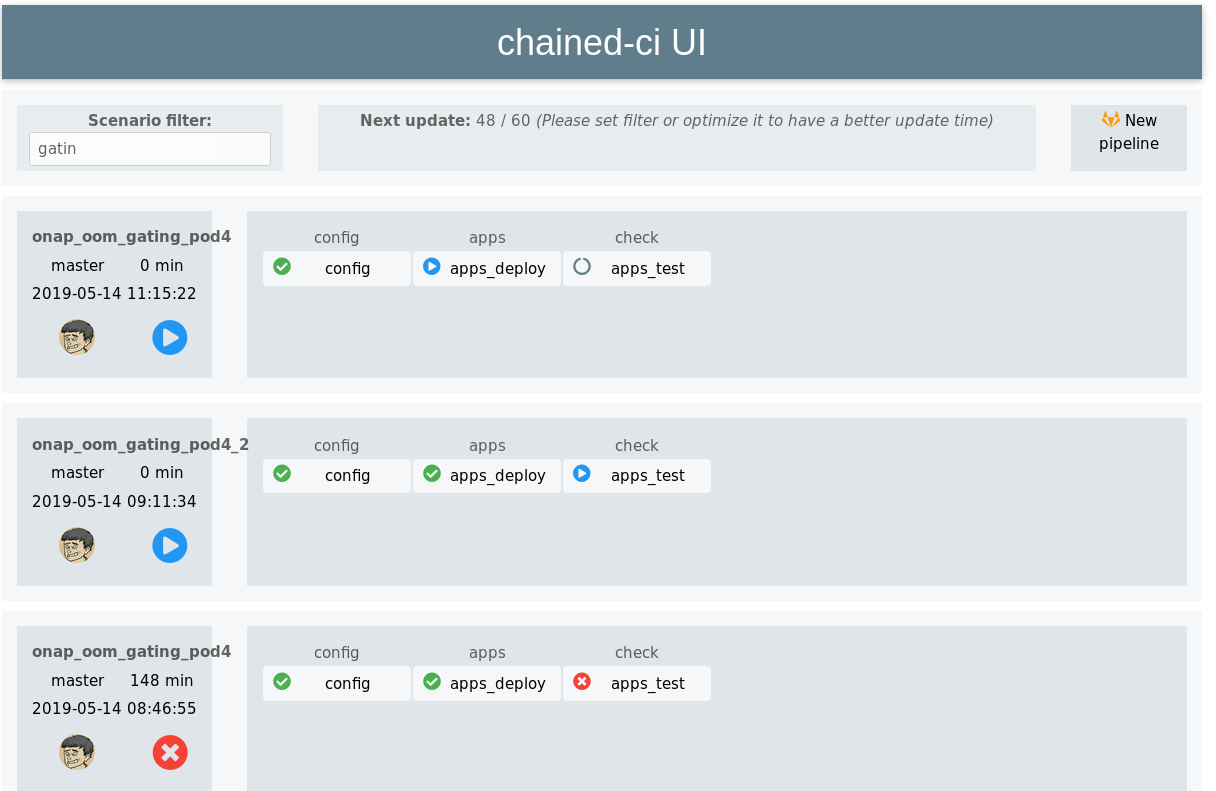Introduction to Chained-ci
Chained-ci is a solution to chain CI/CD pipelines from different gilab projects. It leverages gitlab APIs and features like the artifacts.

As an example if you want to install a solution on an infrastructure, you can chain the project pipeline in charge of infrastructure deployment then the pipeline in charge of the deployment of the target solution thanks to environment variables, configuration parameters provided as artifacts at the end of the first pipeline.
Chained-ci offers additional possibilities such as using static artifacts, notifying third parties.
Why Chained-ci
Historically involved in several Open Source projects, it was very hard to harmonize CI/CD strategies as each project had its own way to manage it and automation culture. OPNFV XCI initiative was created to provide a way to create links between CI/CD teams of different Open Source Networking communities.
In parallel, internally we started having lots of projects on gitlab. The goal was to be able to chain the pipelines of these different gitlab projects. Each project remains responsible for its CI/CD strategy but may expose artifacts and can be consumed by other projects.
Thanks to Chained-ci, it is possible to easily mix and match pipelines and unify CI/CD strategy leveraging gitlab capabilities.
It is possible on the same infrastructure to automate the deployments and testing of several projects in parallel.
Chained-ci project
Chained-ci is composed of several sub-projects:
- Chained-ci: the part where the chains will be created and configured
- Chained-ci-roles: the repository hosting the ansible roles
- Chained-ci-tools: some tooling to simplify the creation of the chains
- Chained-ci-vue: a web front end to easily visualise the different chains.

If you click on any element of the chain, you will see the corresponding gitlab pipeline. You can also restart the chain in case of failure at the step it failed.
